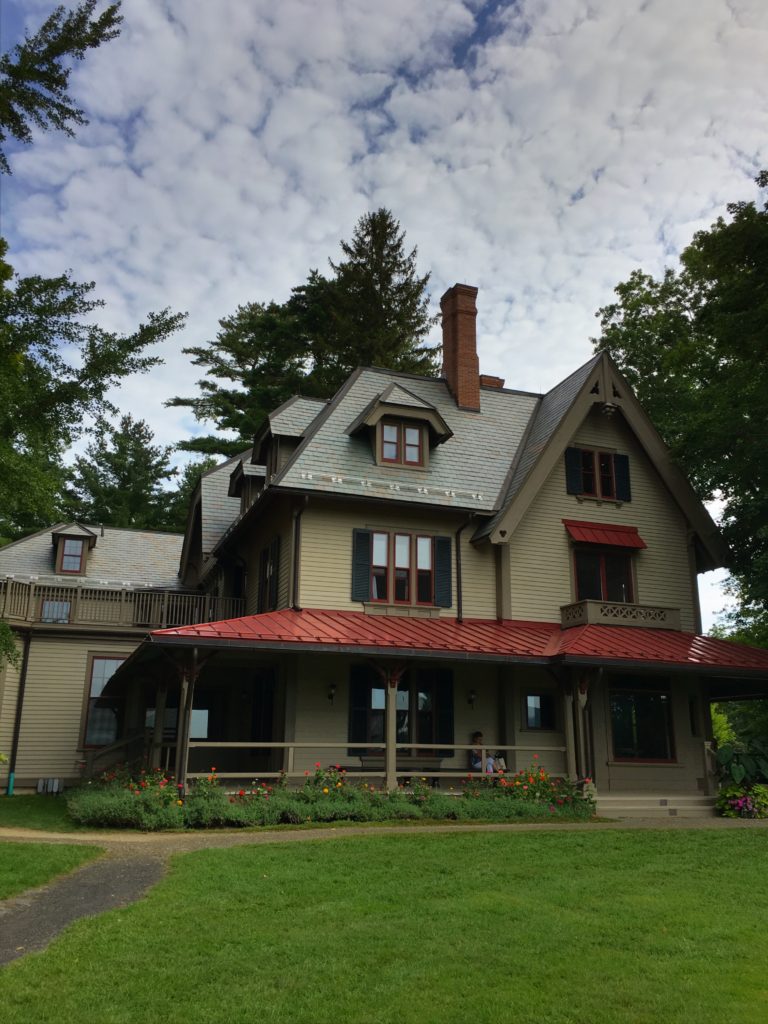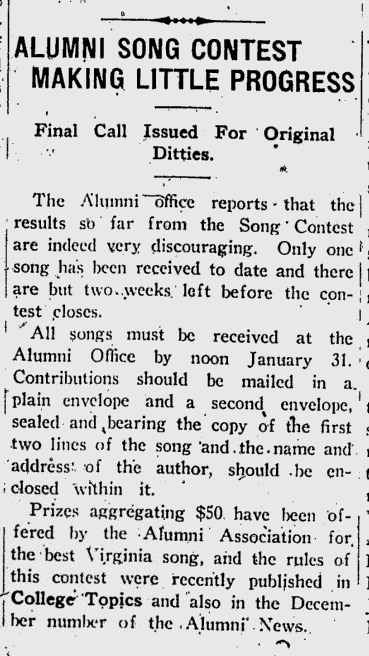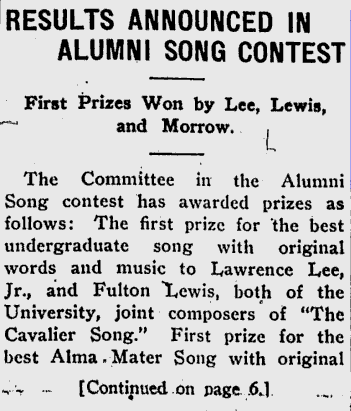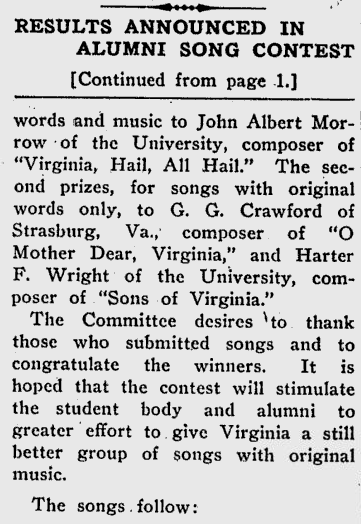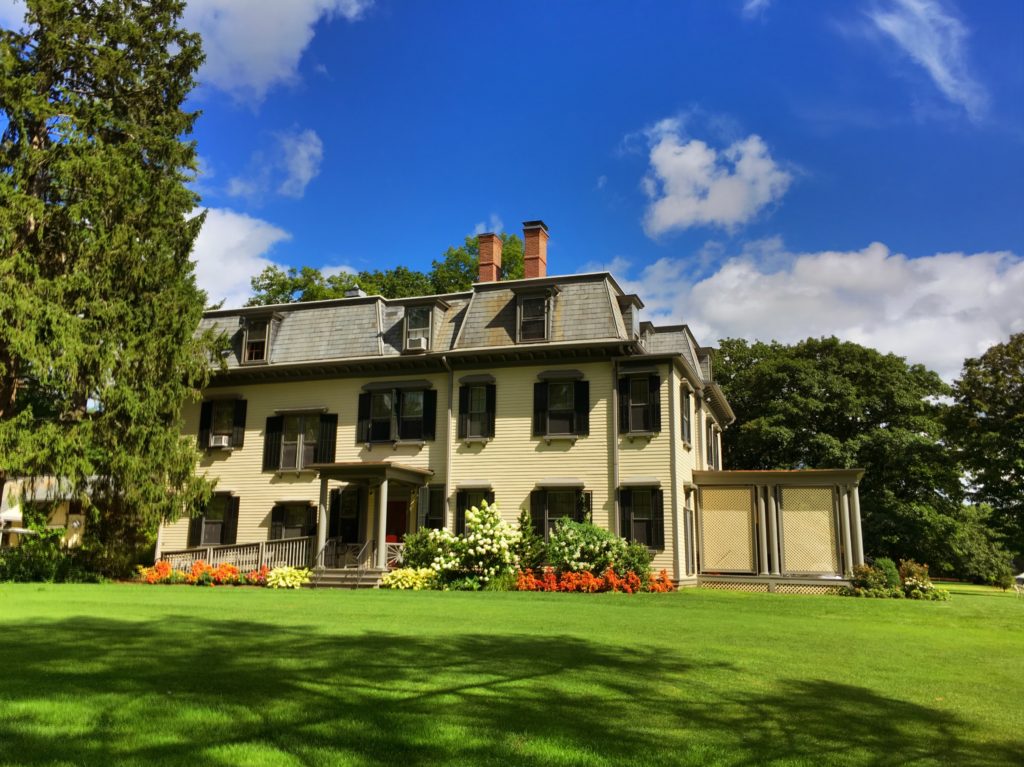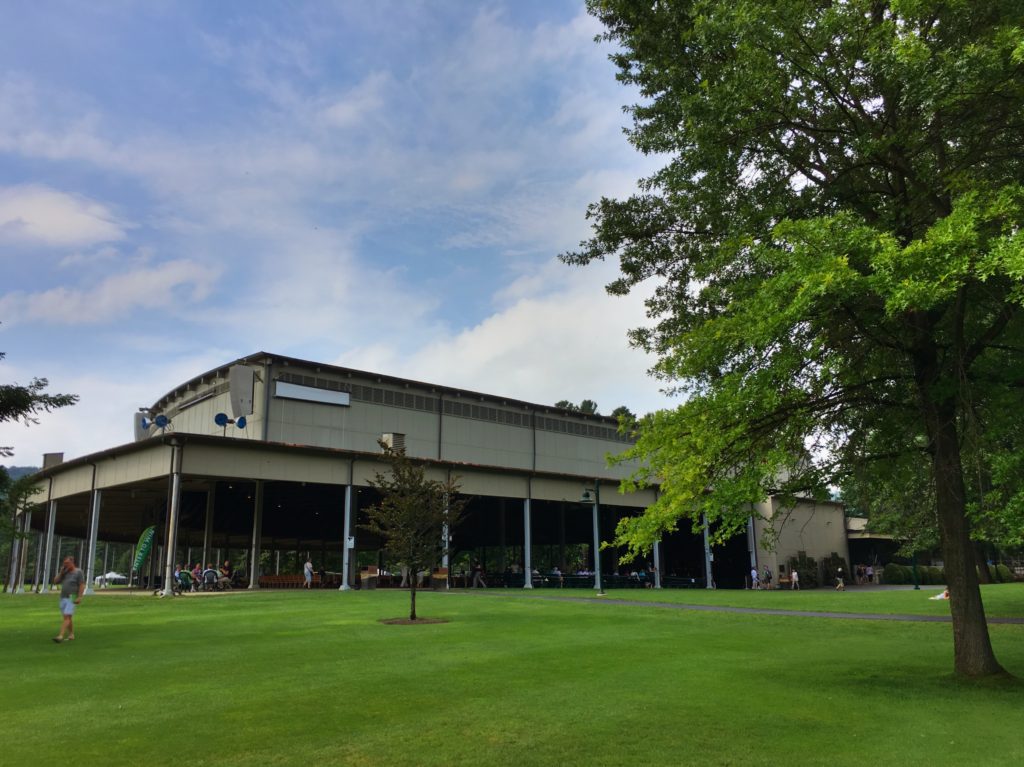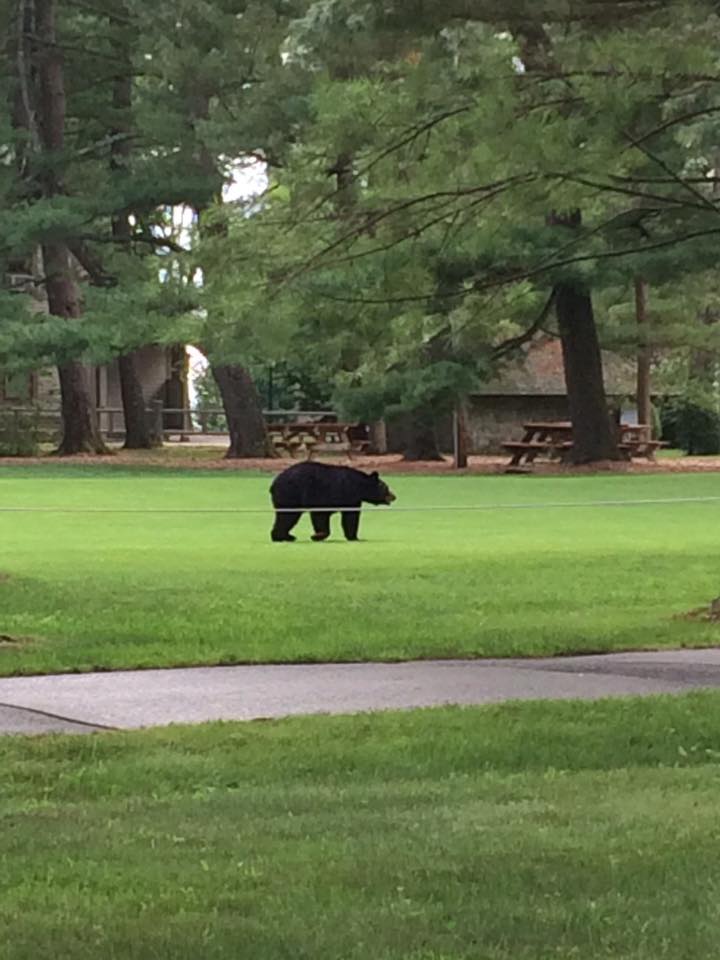Virginia Historical Society’s Blog: What is a sublime landscape? What is a picturesque landscape? Where are they found in Virginia? Nice survey of 19th century painting conventions and landscapes, beginning with Jefferson’s assessment of Natural Bridge as “the most sublime of nature’s works … It is impossible for the emotions arising from the sublime to be felt beyond what they are here.”
Author: Tim Jarrett
Horizons Resurrected
Horizons Resurrected. A web-based walkthrough (using the Unity Player plugin) of the late great EPCOT “world of the future” attraction.
Beethoven 9 with Andris Nelsons
Last Sunday’s Tanglewood season ender was in some ways not out of the ordinary: a performance of Beethoven’s 9th Symphony. But there were some exceptional things about it.
First was the pairing of the work with Aaron Copland’s “Quiet City,” featuring some stunning playing from Tom Rolfs and Robert Sheena. Then there was the conductor, Andris Nelsons, marking (as the Globe’s Jeremy Eichler remarked) one of the first times in recent memory that the BSO’s music director has conducted the season ender. James Levine did it once, but at the beginning of the season, and otherwise left it to guest conductors. Maestro Nelsons was totally engaged. From the first movement there was an electric energy on stage. The announcement he made from the beginning that he would be in residence for a full month next summer didn’t hurt either.
Then, there was our performance. The Beethoven capped a month of work by the chorus with guest conductor James Burton, and his skill showed in our diction and attention to detail. It was the first time in my memory that the men of the chorus didn’t completely immolate the tenor soloist when we made our “Laufet bruder…” entrance, and overall the singing felt spectacular on stage.
The BSO released the clip above not half an hour after the concert ended, and I love how it plays out—although I wish there were a little more of the performance captured. Maybe when the radio clip is posted (update 9/6: here it is).
PS Confidential to Andrew Pincus: the chorus only numbered 140, not 200, and I think at no time were we in danger of covering the soloists.
Come unto these yellow sands
Tonight we sing a Prelude concert. A Tanglewood tradition, these are concerts by groups of musicians that are free with admission to a Friday evening main concert. Often in Ozawa Hall, they are an opportunity to hear different ensembles or repertoire than you otherwise would on the grounds. There are a lot of chamber performances—last week I heard the Messiaen Quartet for the End of Time. And once a summer, the chorus performs.
This is my eleventh summer at Tanglewood and the first time I’ve sung a Prelude concert. And my anticipation is high. The repertoire is a selection of settings of Shakespeare’s writings, including two settings of Ariel’s song from The Tempest.
Each time we perform the settings—either the Ralph Vaughan Williams or Frank Martin settings of the “Full Fathom Five” text in particular—I am reminded of the incredible depth of Shakespeare’s ownership of the English language and of his imagination. That this one poem could resonate with these composers, and also Eliot and Laurie Anderson…
Full fathom five thy father lies;
Of his bones are coral made;
Those are pearls that were his eyes:
Nothing of him that doth fade,
But doth suffer a sea-change
Into something rich and strange.
Exploring EPCOT’s Horizons ride from the inside
I have a new obsession: reading the archives of the Mesa Verde Times blog. This pseudonymous walkthrough of a series of surreptitious behind-the-scenes tours of the late, lamented Horizons future ride at Disney’s EPCOT is fascinating as much for the old-school blogging as it is for the actual content. Which, don’t get me wrong, is plenty fascinating, as it consists of pictures of hidden areas of the ride’s sets and maintenance areas, Easter eggs left by the ride’s designers (you’ll never guess what the designers hid in the fridge of the Desert Habitat Kitchen, next to the sausages).
Start at the beginning and read up.
Instant replay: Apple’s 2016 Black Hat presentation
MacStories: Apple’s Presentation at Black Hat Now Available to Watch in Full. For those like myself for whom the stories were tantalizing teasers, the presentation is now available on YouTube. I love the illustration of the “physical one-way hash function.”
Digital Yoknapatawpha
UVA Today: UVA spearheads efforts to digitally map Faulkner’s world. Stephen Railton and the fine folks at IATH are continuing their project to create an interactive way to access Faulkner’s writing. Some of the visualizations, like the Location-Character Graph, look like they have the potential to revolutionize study of his writings.
Review roundup: Rossini Stabat Mater, Verdi Aida
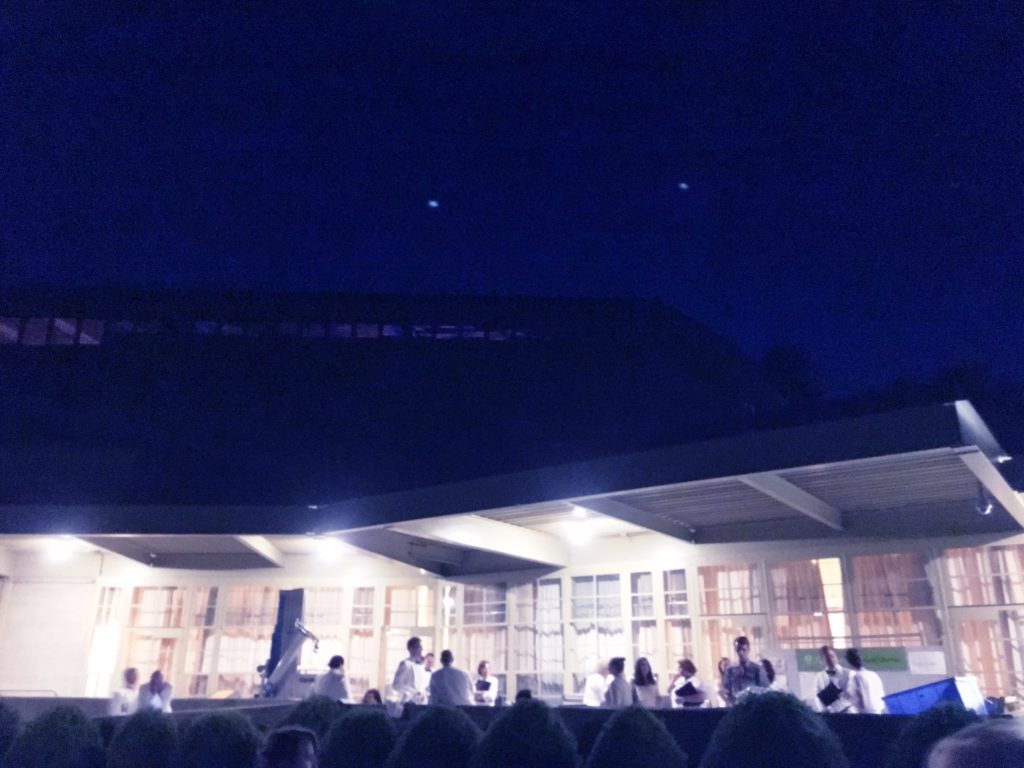
Coming back from Tanglewood is always challenging, and doubly so after a weekend like the one we had August 19 and 20. As I told a co-worker, it feels weird to walk into our office and not hear the magnificent Aida trumpets heralding our approach.
I go back out tomorrow for a Prelude concert (music set to the words of Shakespeare, mostly by British composers) and the Beethoven 9. Before I lose the music in my head, here are a few reviews that came in.
Rossini Stabat Mater with Charles Dutoit: I had never sung this piece before, and surprisingly the BSO had never played it at Tanglewood, and had only played it twice before, in 1974 and 2010. It turns out to be a fairly monumental work that blends sacred and operatic choral traditions, with some seriously intense solo writing (the tenor’s high note in the second movement comes to mind) along with choral writing that runs the gamut from amazingly delicate pianissimi to operatic descending lines. The fifth and ninth movements, sung a cappella, might have been my favorites.
Boston Classical Review (Lawrence Budmen): Dutoit, BSO serve up a Rossini rarity along with a heartening solo appearance at Tanglewood. “Under guest choral director James Burton, the Tanglewood Festival Chorus brought gleaming vocal sonority and subtly terraced dynamics to their a capella voicings of the ‘Eeia, mater’ and the lamentations in ‘Quando corpus morietur.’ Dutoit skillfully blended both chorus and vocal soloists with the orchestra’s highly charged playing.”
Boston Musical Intelligencer (James Prichard): Stabat Mattered at Tanglewood. “The choral work that opens the masterpiece (Stabat mater dolorosa) immediately established the high standard that was to prevail throughout the performance. Prepared by guest chorus director James Burton, the Tanglewood Festival Chorus once again displayed the smooth voice blending and comfortable control over a wide dynamic range that Boston audiences came to expect from them during the long tenure of founding director John Oliver.”
Verdi, Aida (Acts I and II) with Andris Nelsons: This was an astonishing piece even in performance of only half the opera, with a huge chorus and orchestra supplemented by offstage banda and, of course, the Aida trumpets. We were with a stellar crew of soloists including the stentorian Morris Robinson and Met soprano Kristine Opolais, who happens to be conductor Andris Nelsons’ wife. (The performance featured a total of 17 married couples among the soloists, orchestra and chorus, a fact which did not go unremarked-upon.)
Boston Classical Review (Lawrence Budmen): Uneven singing but thrilling moments in Verdi’s “Aida” at Tanglewood. “For the second night in a row (following a strong showing in Rossini’s Stabat Mater), the Tanglewood Festival Chorus was a tower of strength. The sumptuous sound of the female voices was particularly outstanding in a splendidly coordinated ensemble under guest choral director James Burton.”
Albany Times-Union (Joseph Dalton): A marriage of mighty forces for ‘Aida.’ “…as can often happen in a concert performance of opera, the inner workings of the score, especially the orchestration, were revealed as fresh wonders. Examples were the use of harps with the chorus, and an extended passage of dancing and swaying lines that started in the flutes and expanded into the entire woodwind section.”
Boston Globe (Jeremy Eichler): At Tanglewood, an ‘Aida’ both intimate and grand. “Bethany Worrell, a TFC member, did the chorus proud in her solo turn. Overall the TFC, this time prepared by James Burton, sang with a nuance and confidence that lifted its work notably above the level of other recent outings.”
Berkshire Eagle (Andrew Pincus): With Nelsons’ return, BSO goes adventuring. “The chorus, prepared by James Burton, was a consistent presence as troubled citizens of Memphis.”
Boston Musical Intelligencer (James Prichard): Celeste Nelsons, Opolais, Verdi, BSO, et alia. “Special mention is due soprano Bethany Worrell, a TFC member whose ethereal tone as the High Priestess enriched the texture of the production beyond the few measures of music in which we heard it.”
“A still better group of songs”
Today’s adventure into the musical past of the University of Virginia comes courtesy of my sense of curiosity. I had often seen the statement (starting with Virginius Dabney’s fine history of the University, Mr. Jefferson’s University) that “Virginia, Hail, All Hail” and “The Cavalier Song” were winners of a competition sponsored by the student newspaper, College Topics, for the best fight song and alma mater song. It occurred to me that I had repeated that claim in several places, including on Wikipedia, without actually checking the primary source.
I had a little downtime on Saturday and paged through copies of College Topics from early 1923—thanks, Google. What I found surprised and amused me a little.
Discovery one: The contest was not widely subscribed. On January 19, 1923, with twelve days left in the running, Topics ran the following article:
So apparently, even in this more musical time, students and alumni were not pounding down the door to provide original songs.
Discovery two: The competition was not specifically to find an alma mater song or fight song; it was more generally about getting more original songs written about the University and was open to both students and alumni.
Discovery three: The organizers weren’t wild about the winners! On February 16, in announcing the winners, they said the following: “The Committee desires to thank those who submitted songs and to congratulate the winners. It is hoped that the contest will stimulate the student body and alumni to greater effort to give Virginia a still better group of songs with original music.” This attitude may explain why “Virginia, Hail” was not more widely adopted outside the Glee Club. Also of note: neither of the second place winners were Glee Club members, while two of the three first place winners were associated with the Club.
Here’s the article from that day, minus the texts of the winning songs:
I still have one more piece of research to perform, since I haven’t seen the original announcement of the competition. Google News archives doesn’t have College Topics from December 1922, and I can’t find a copy of the December 1922 Alumni News on line either. But I’m a little closer to having good information than I was.
Friday musical inspiration: Aretha, “Natural Woman”
There are some days where I work hard at music, that it seems a struggle. That I wonder why I do it.
Then I get lucky, and get to have a moment of transcendence.
Those are hard to share. They don’t happen at the front of the stage, and they generally happen while a lot of other music making is going on. And unless you’re a choral singer yourself, I think it might be hard to relate.
But this video might help. Watching Carole King lose it as the Queen of Soul performs her hit, watching the president wipe a tear as Aretha pays tribute to the great songwriter, and getting the astonishing high from watching the conclusion of the performance is a little like what one of those transcendent moments feels like from the risers in the back of the stage.
Tanglewood days
I am at once thrilled to be back at Tanglewood this week and a little gobsmacked at the sheer amount of singing we’re doing. We arrived Tuesday and have been alternating rehearsal days since then: Tuesday and today on the Rossini Stabat Mater with Charles Dutoit, yesterday and tomorrow on Verdi’s Aida (Acts I and II) with Andris Nelsons. It’s a lot of music. My voice was ragged yesterday and today—I need to pace myself.
That is not to say it’s not a lot of fun. After being in the chorus since 2005, it feels a bit like a family, even notwithstanding all the actually married members we have. But I am desperately appreciating the time off from rehearsals this afternoon.
And I appreciated the few minutes of downtime between rehearsals yesterday in which I got to walk the property a bit and reacquaint myself with some of its less visited corners. Like Highwood, the house that was the residence of Serge Koussevitzky (shown above). After singing grand opera and grandly operatic religious music, it’s humbling to walk by the residence of the man who shaped so much of Tanglewood’s traditions and reflect on the sheer amount of organizational and artistic genius—and hard work—that had to be done for the place to last for this long.
Slavery on the Lawn: follow up
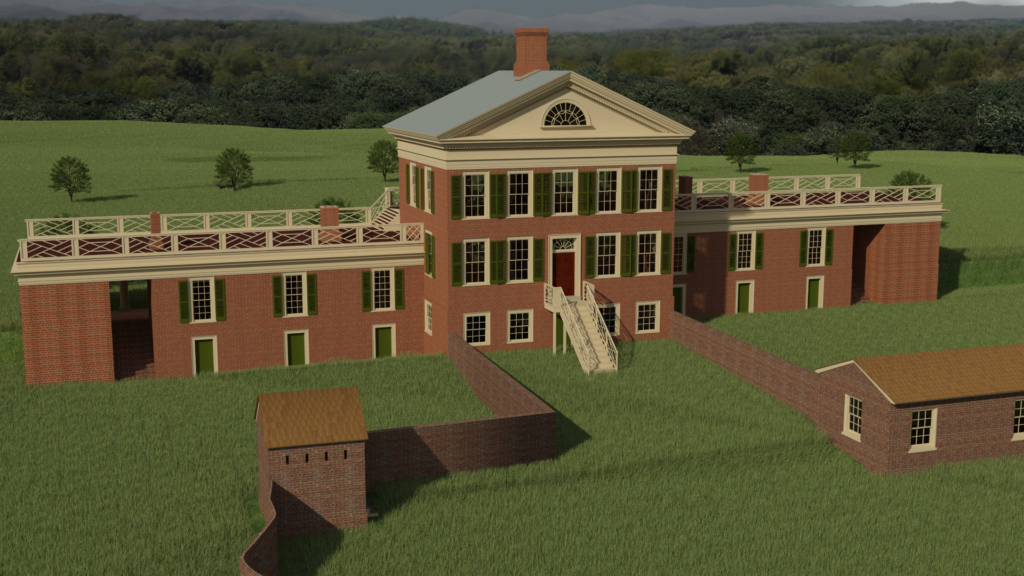
A few follow ups to Monday’s post about slave quarters on the Lawn:
“Rooms beneath the student rooms on the East Lawn”: I couldn’t find a photograph, but the excellent rendering above shows how the sloping elevation of the ridge on which the Lawn is situated exposes access to a basement level beneath the student rooms on either side of Pavilion VI on the East Lawn. These are visible as you approach the Lawn via the alley between the gardens of Pavilions VI and VIII. I distinctly remember a conversation with other students (my memory is they were University Guides, but I could be mistaken) discussing the theory that these anonymous windowless doors were slave quarters, a theory which was dismissed at the time but which appears to be true.
“Even in the recent IATH project to create and render 3D models of the buildings, they appear to exist in a vacuum, without outbuildings”: I spoke hastily. The IATH project in question, the “Jefferson’s University: The Early Life” project, does include renderings of some pavilions in a standalone fashion. But as seen above, for some pavilions a more full representation is provided. Particularly noteworthy is the work that has been done on the Pavilion VI outbuildings, which provides renders and historical context for no fewer than five outbuildings, ranging from Gessner Harrison’s office to a privy to a smokehouse. Also see the page on the Crackerbox, which is described as a combination kitchen and slave residence.
In sempibearna saecula
Every time I come to Tanglewood, there’s something memorable about the rehearsals. Like the time that James Levine forgot about one of the sopranos in the scaffolding above the stage. Or the Meistersinger rehearsal where Johan Botha and James Morris drank their between-solo water from enormous steins.
Today, there was a bear.
Partway through the beginning of one of the movements of Rossini’s Stabat Mater, there was a commotion from the lawn. At first we ignored it; then the words “a bear!” filtered through everyone’s consciousness and we all stopped for a few minutes to watch the adult black bear cut a diagonal across the lawn.
And then we kept singing, as the grounds staff deployed a pickup truck to herd the bear away. One wonders what Rossini would think.
Update: Here’s a photo of the bear wandering the Tanglewood grounds, courtesy Tom Wang.
At home in The Mews
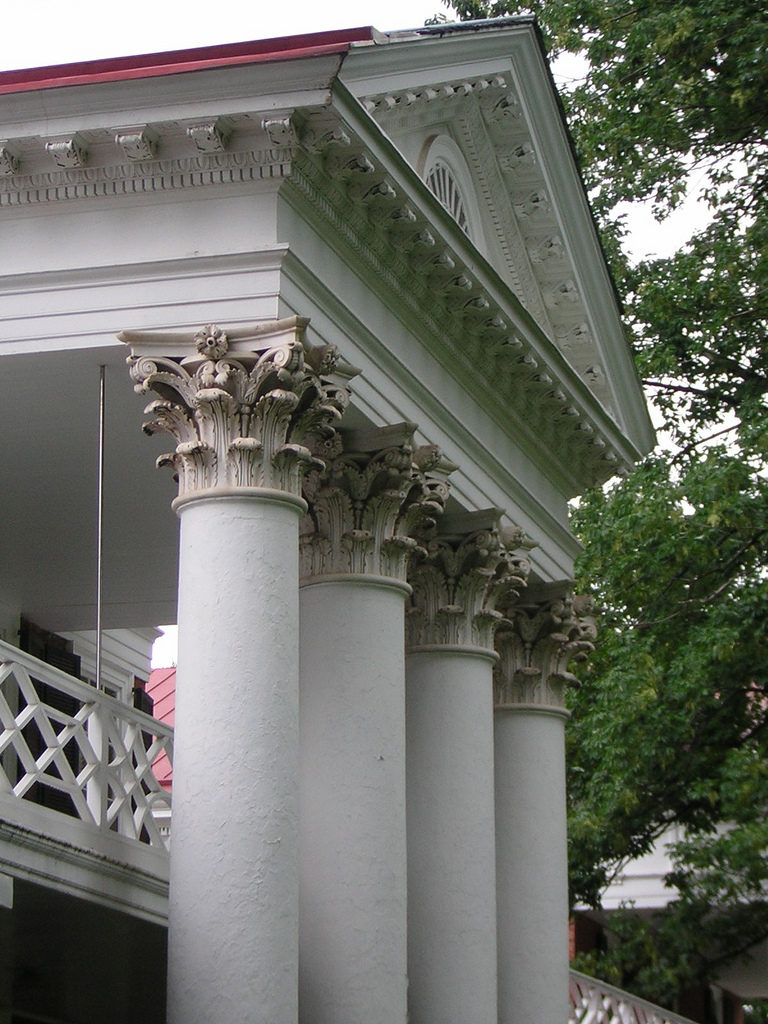
UVA Today: Beneath the Mews. As I noted on Facebook, this article covers a plethora of my interests. University of Virginia archaeologists, working underneath the floor of an outbuilding to Pavilion III, have discovered traces of an original Jeffersonian serpentine wall below where slaves were once housed—and where Virginia Glee Club conductor Harry Rogers Pratt and his wife Agnes Rothery once lived.
Pavilion III, currently undergoing a minor renovation, is said to be one of the few pavilions not to have suffered substantial exterior structural additions or alterations from its Jeffersonian incarnation. Apparently this extends to its mews, which an official Historic American Buildings Survey notes was “constructed between 1829–1830 [and] … is visible over the north garden wall.”
Which means, of course, that the Mews was the outbuilding that was visible from the rear window of my Lawn room when I lived in 3 West in 1993-94.
The other thing that’s striking about this recent announcement is the matter-of-fact inclusion of the following statement, which would have been highly controversial even when I was a student:
“In its early years, [The Mews] served as a quarters for enslaved people, and may also have served before 1865 as a washhouse and apparently, a chicken house,” said Kirt von Daacke, co-chair of the President’s Commission on Slavery and the University. “The building is important because it is one of only a handful of extant structures where enslaved people lived and worked.”
So this fixture of the landscape was silently, unremarked-on, a remnant of the secret history of slavery at the University of Virginia. I say “secret” because it was absolutely never discussed when I was a student. The guides would deny that the rooms beneath the student rooms on the East Lawn housed slaves, when it was clear in retrospect that they must have. No one talked about the fact that much of the original Jeffersonian plant was built with slave labor. And yet it was all around us. If you want an example of how screwed up America’s relationship to reality and its own history is, that’s as good as any.
Aside: the photo at the top of the post is of the front façade of the Pavilion because apparently no one takes pictures of the rear garden. It is emblematic of the history of slavery at the University that this staggeringly well-photographed Jeffersonian residence has very few photographs published of its back gardens and outbuildings. Even in the recent IATH project to create and render 3D models of the buildings, they appear to exist in a vacuum, without outbuildings.
Cocktail Friday: The Interpol
Today’s cocktail was inspired by a coworker who had it in Vegas. He was able to give me the ingredient list but not proportions; I had to work it out by trial and error.
The Interpol builds on several rich traditions: gin cocktails featuring amari (e.g. the Negroni, with Campari) and traditional cocktails that substitute an amaro for some or all the vermouth, for instance. This one builds an alternative to a martini by replacing the dry vermouth with Cardamaro, a cardoon (artichoke) based amaro that adds a woody, herbal flavor. (You might remember it from my Woodsy Owl).
I had to play with the proportions and am not convinced that I got it quite right, but I really liked this version. There’s an alternative formulation at Kindred Cocktails that I also want to try, but I think the simple syrup has to be 86’d—the gin is already sweet enough.
As always, here’s the Highball recipe card, if you plan to try it out. Enjoy!

